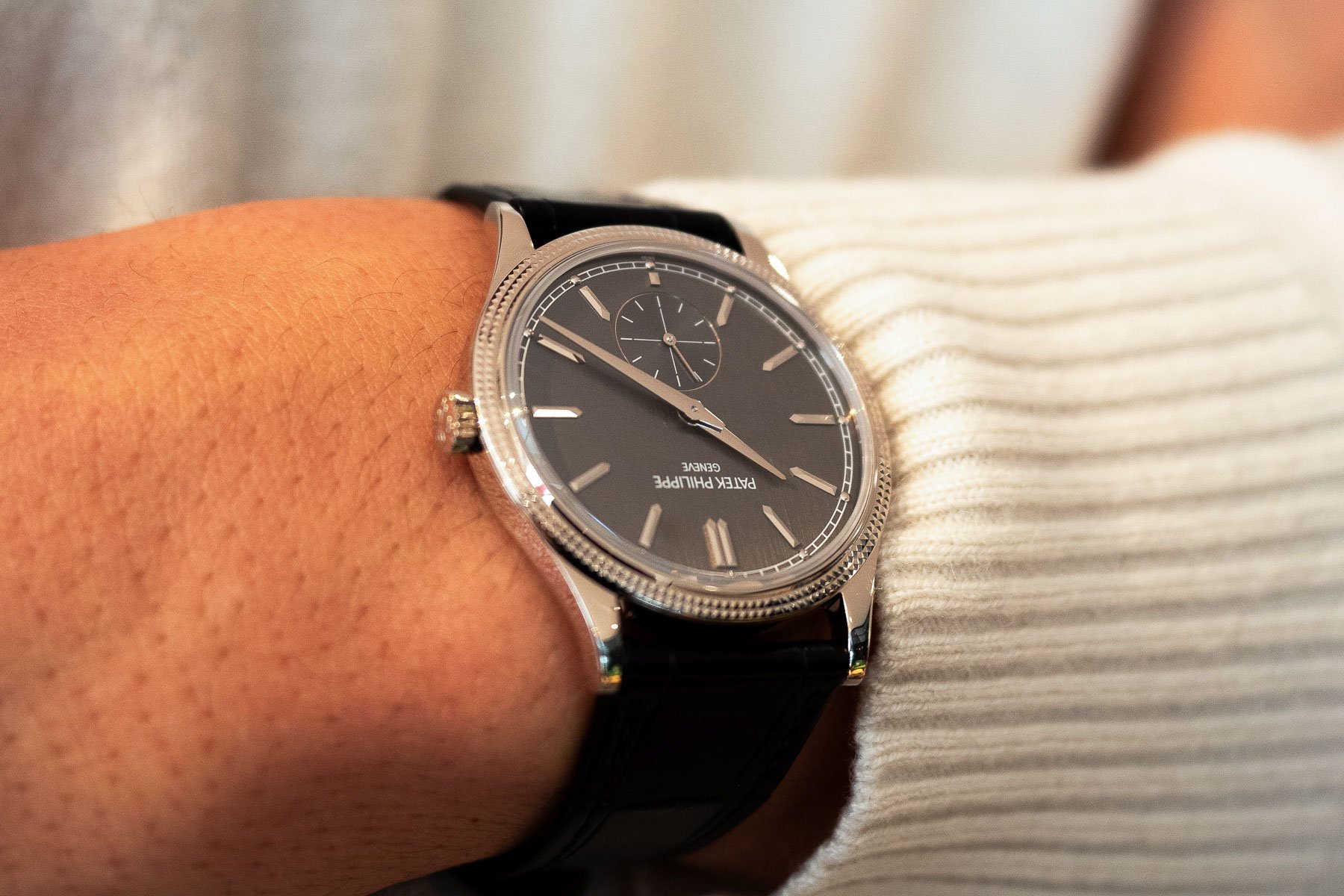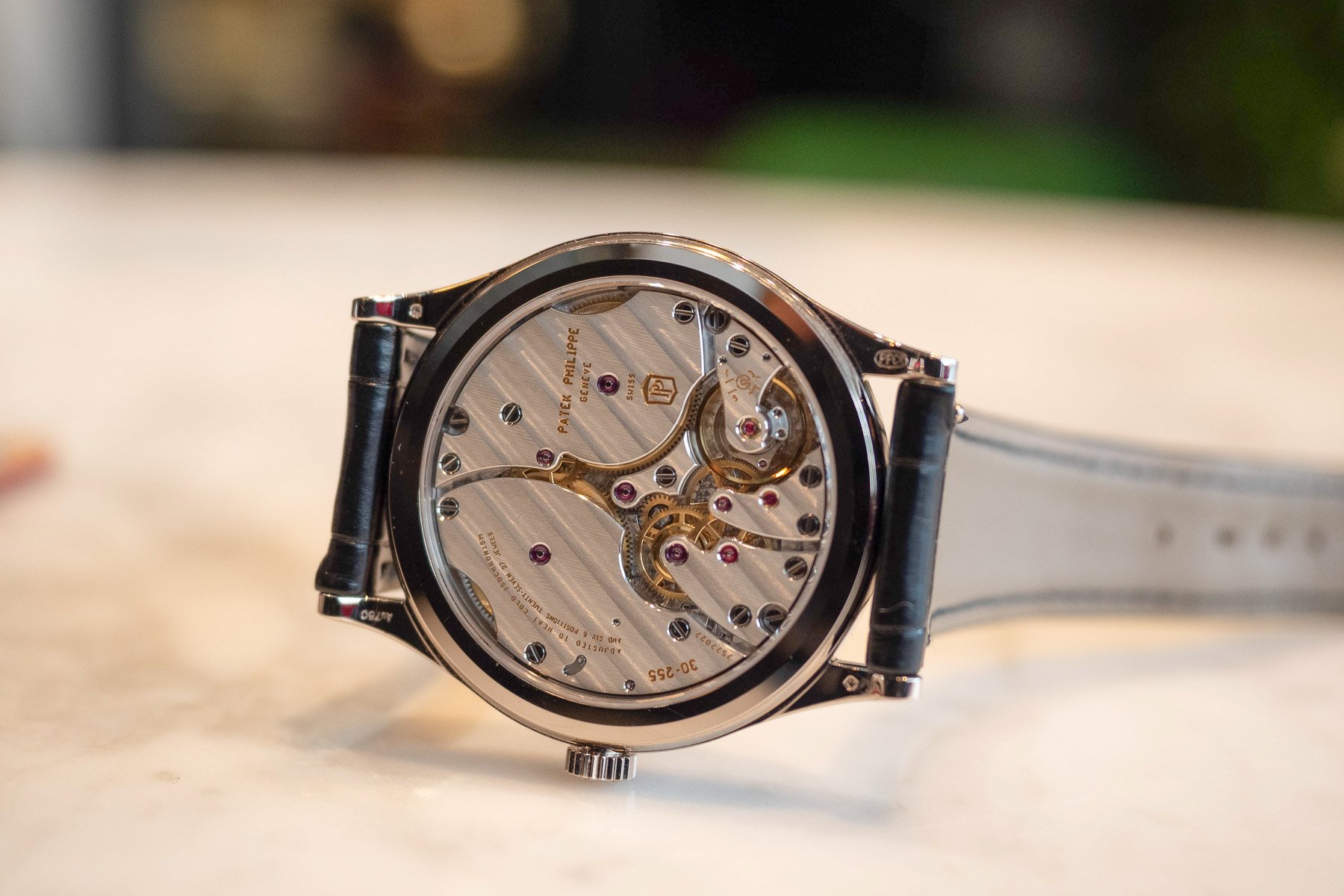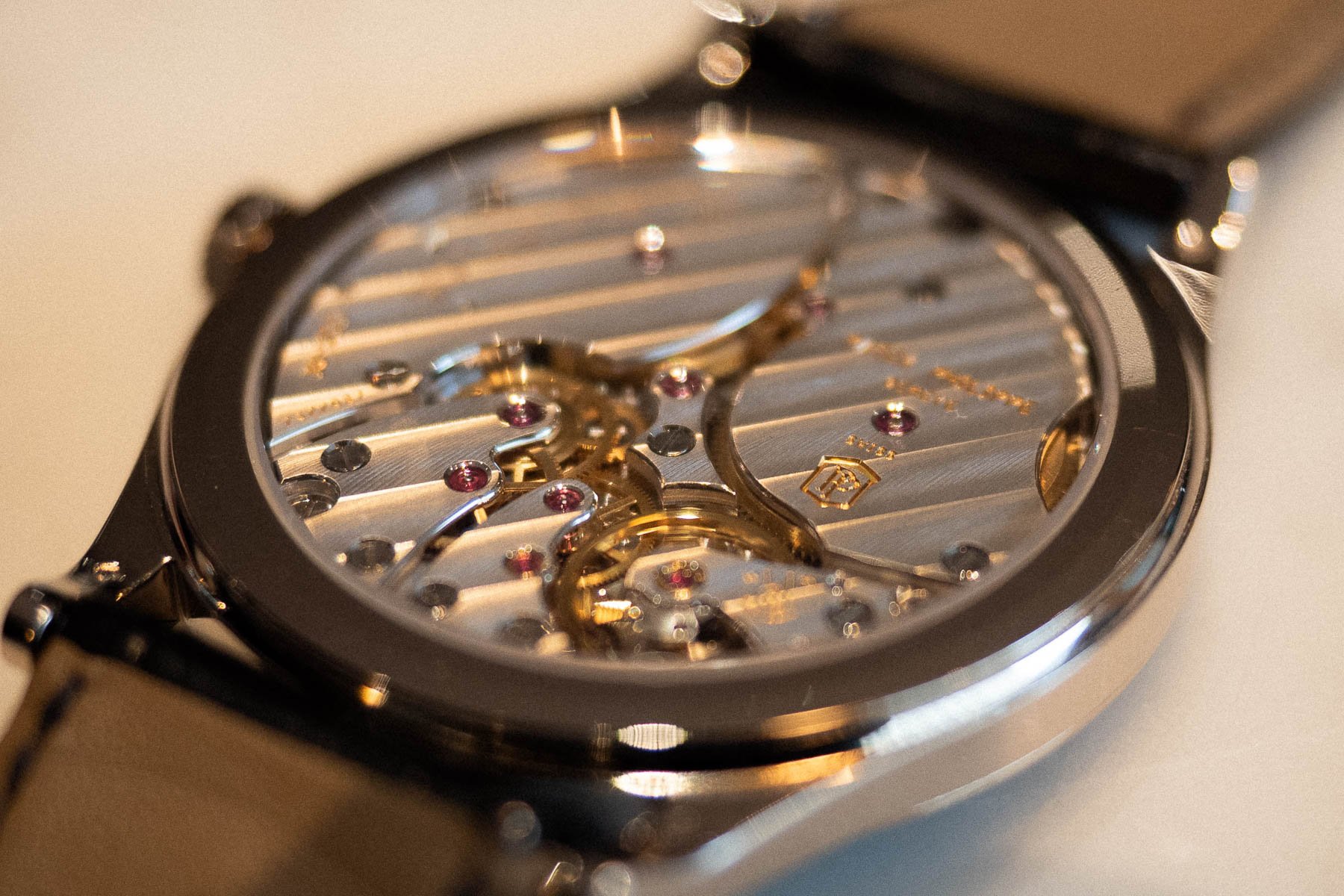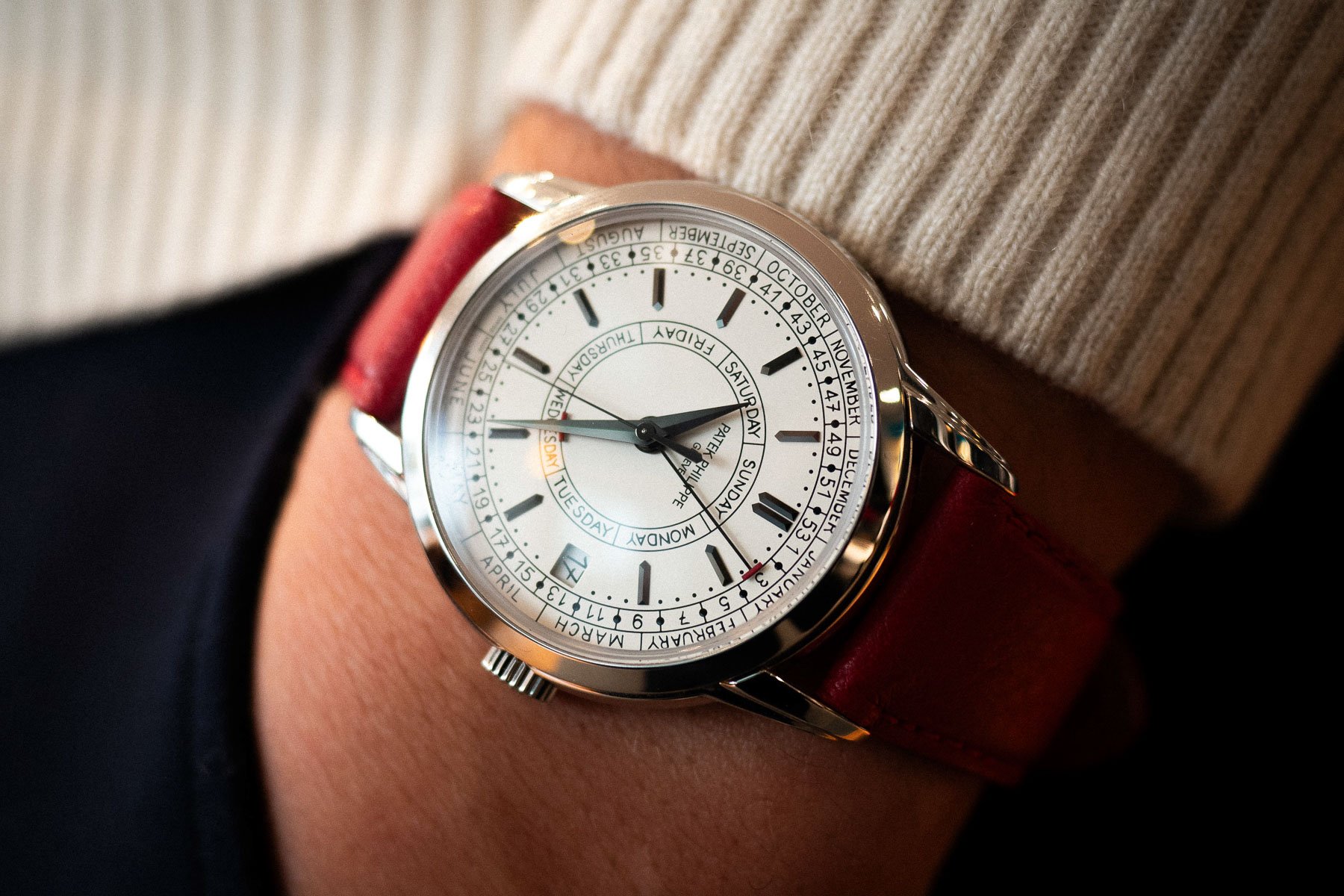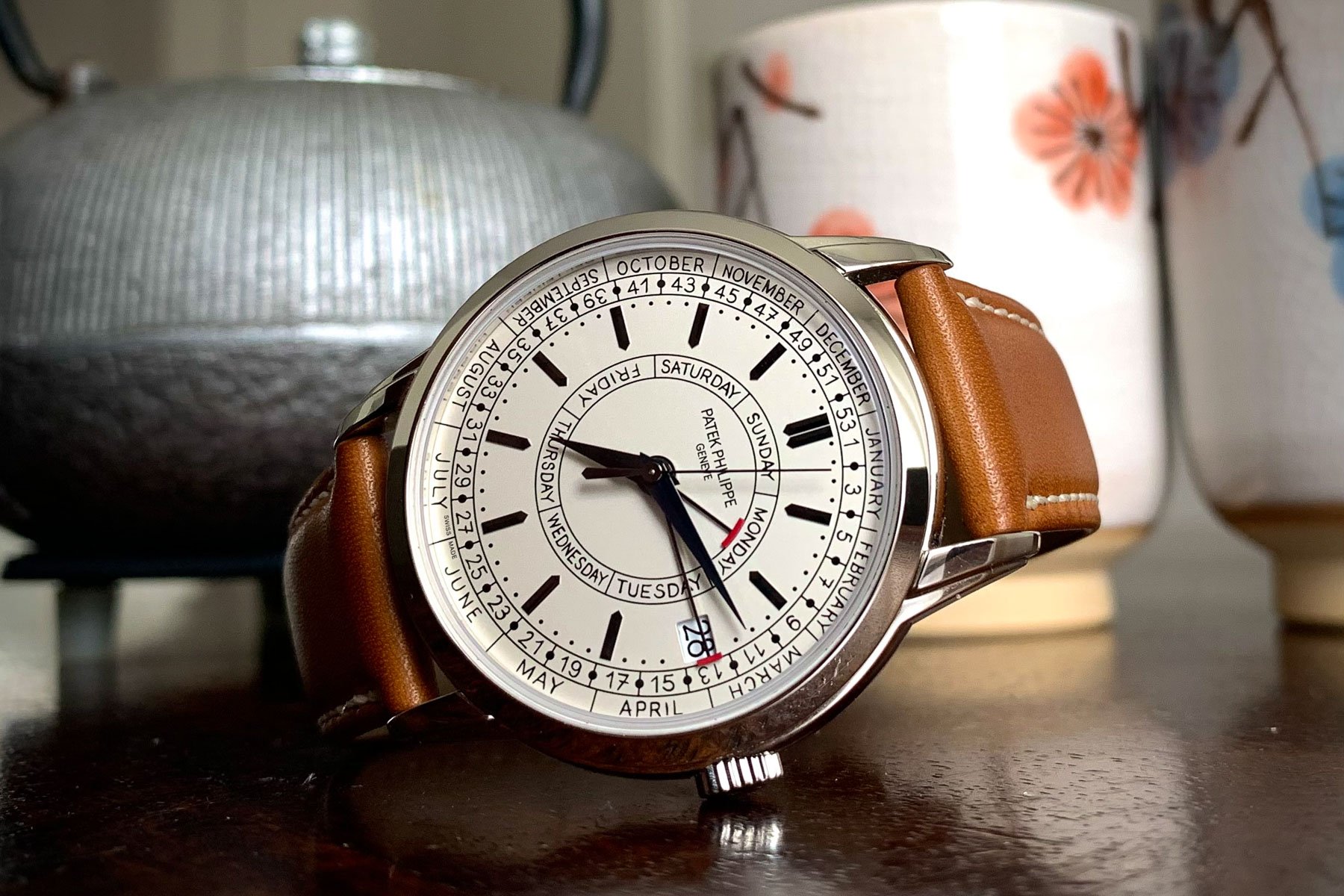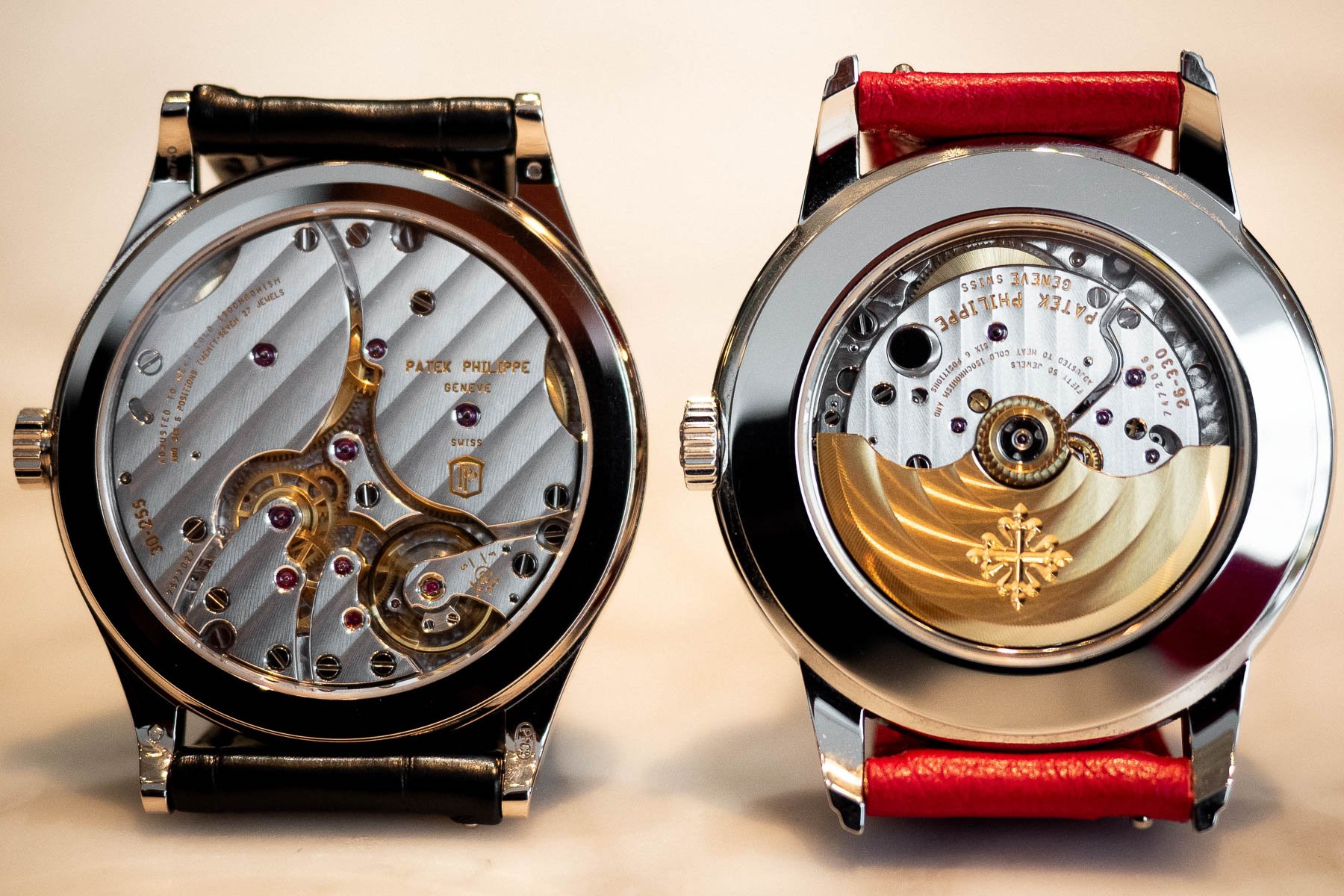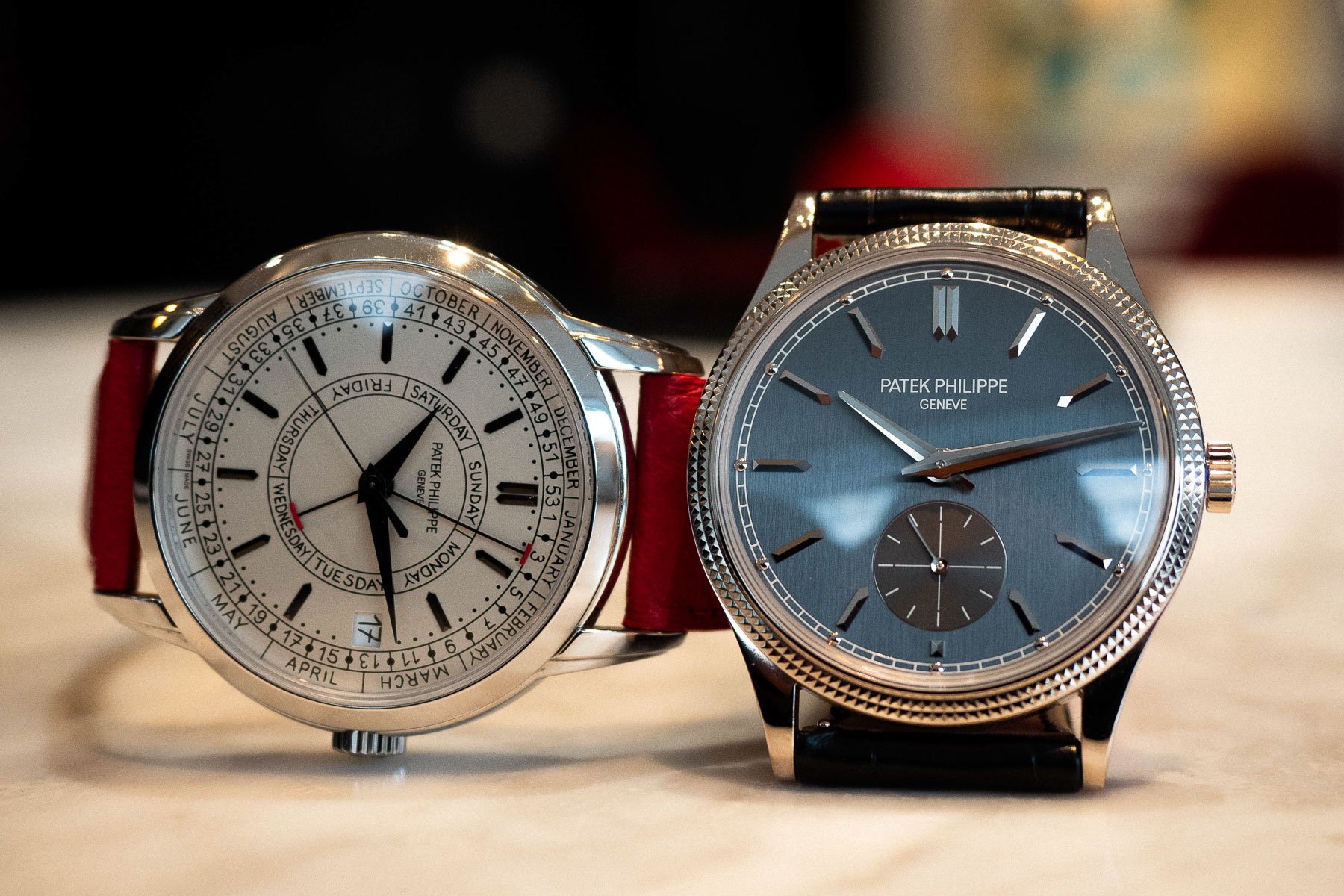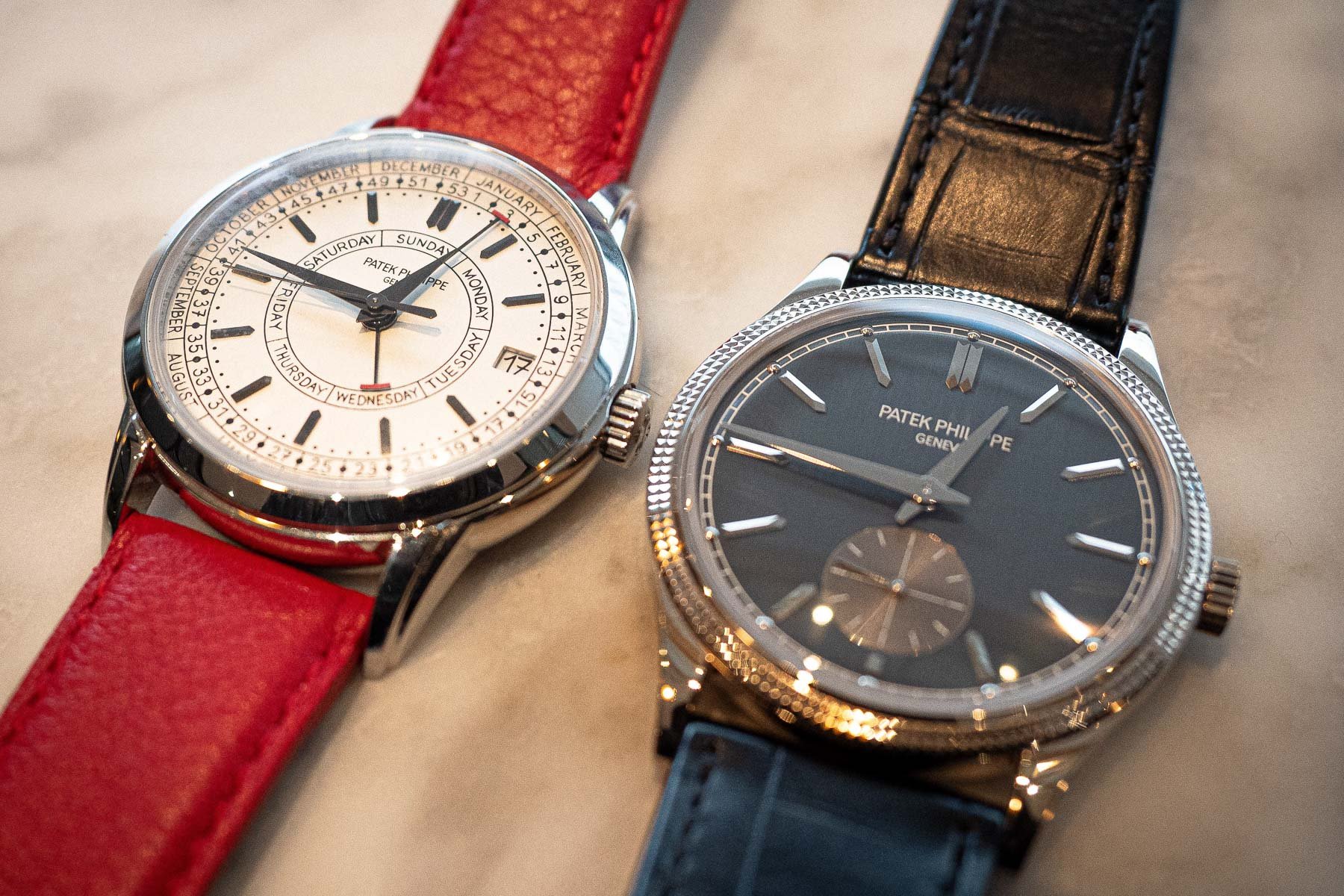Patek Philippe Calatrava 6119G Vs. 5212A — Two Entryways Into The World Of Contemporary Patek Philippe
There is so much to say about Patek Philippe, arguably the most significant and venerable watchmaker in high-end Swiss watchmaking. The brand certainly displays a mastery of complications. Perhaps even more relevant to today’s watch industry, Patek Philippe also expertly balances tradition with modernity. While the brand is famous for creating traditional, subdued, understated luxury, it has historically been at the vanguard of technical innovation. Patek Philippe invented and patented the stem-winding/keyless system (1845), the first perpetual calendar wristwatch (1889), the annual calendar watch (1996), the first quartz electronic clock with no moving parts (1952), and countless others. On top of this, Patek was unequivocally dominant in engineering and accuracy competitions in the 19th and 20th centuries.
Today, many who hear the brand name think of its sporty, elegant, and quasi-unattainable watches and how celebrities, well-known collectors, and various other “high-profile” individuals all over the world have suddenly become enamored with the brand thanks to them. Yes, this is undoubtedly a part of Patek Philippe today, but there is so, so much more than that. In this article, I will be focusing on two references — 6119G and 5212A — that represent excellent entry points into a brand that is notoriously difficult to get into. Both are both members of Patek’s Calatrava line, which is arguably its most important. As such, these two watches have plenty of similarities. Interestingly and especially relevant to this article, though, they are also in stark contrast to each other in many ways.
Patek Philippe Calatrava 6119G: Traditional, subdued, and simple
Starting with the 6119G, we must rewind a little. In 1985, Patek Philippe released the Calatrava ref. 3919, a 33mm ultra-slim dress watch with a manual-wind, time-only, small-seconds movement, hobnail (Clous de Paris) bezel, and precious metal case on a leather strap. This important reference set about a stream of releases seen as the very definition of quintessential Patek Philippe dress watches today. The current counterparts to the 3919 are the 2021-released 6119G (white gold) and 6119R (rose gold). These are worthy successors to their predecessors and follow the same design cues and vision of those watches while still looking forward.
The 6119G has a perfectly symmetrical, modern, vertically brushed slate-gray dial with a contemporary look to it. Add the 39mm case diameter to this, and the watch somehow doesn’t feel like old-school Patek anymore. Where this watch does prove a relationship to its ancestors is the impressive 8.08mm case thickness, which, coupled with the generous case diameter, feels exceptionally thin. The hobnail bezel, a design that is inherently Patek, features exceptionally good finishing with zero imperfections even under a loupe. The 6119G’s white gold case also does not feel top-heavy on leather thanks to its slimness. To stay in line with the formal nature of the watch, it comes standard on a black alligator strap with a white gold tang buckle.
A case constructed to accommodate a new movement
The 6119G uses the 30-255 PS hand-wound caliber, which debuted in this particular reference and, interestingly, only powers this watch and the 6119R. Patek Philippe is known to use the same movement across different models and references. This one is an exception and for good reason — its size. You will notice that the movement’s 31mm diameter is quite substantial, which is mostly due to two parallel mainspring barrels that enable a constant force and a formidable 65-hour power reserve. While it’s not a groundbreaking power reserve in the industry, considering the slimness of the case, this is an impressive number.
The movement’s substantial diameter also manages to fill the entire display case back with the Patek Philippe Seal finishing that we have come to love and enjoy. There is something special about a watch with a caliber that fills the case, and thanks to the rotor-less manual-wind movement, we get to enjoy an unobstructed view of it to top it off. The 6119G and 6119R will each set you back CHF 27,250 including VAT.
Calatrava 5212A: Whimsical, unconventional, and complicated
The 5212A (“A” signifying stainless steel) was a big surprise upon its release in 2019 and was a first for Patek Philippe in ways more than one. It featured Patek’s first weekly calendar and the first dial to feature a hand-written typeset. Furthermore, the 5212A comes in stainless steel only, which is unconventional for watches within the Calatrava line. What is more traditional is the case shape, which is perfectly round, a key feature of the Calatrava. It comes with double-stepped lugs that hark back to the reference 2512 in yellow gold from the mid-1950s. This watch was something new for Patek, and Thierry Stern, who played a big role in its conception, even said the reception within the brand was 50-50. After consulting with his father, Philippe Stern, who approved of the design, it became clear that he would give the go-ahead.
The handwritten font, which I would consider the main feature of this watch, exudes a very approachable, relaxed nature. It isn’t as serious as many of the Calatravas we’ve seen, remarkably proving that Patek Philippe has the potential to be, dare I say, fun! The opaline dial emits a warmth when contrasting with the black font and the blackened hour markers and hands.
Two red accents on the calendar hands provide a bit of “pop,” lending it a slightly sporty look. The sector dial spreads the abundant letters and numbers out to give it a balanced design, with the 40mm case diameter providing enough dial real estate to prevent a cluttered look. The 10.79mm case thickness is quite impressive considering that this watch houses an automatic movement with a not-insignificant stack of five hands plus a date wheel.
A new era of automatic Patek Philippe calibers
The 5212A’s caliber 26-330 S C J SE shares an attribute with the 6119G’s movement in that it is also unique to this watch. It was the introduction of the now standardized automatic 26-330 caliber (but with an additional weekly calendar module), which seems to be phasing out the longstanding caliber 324 caliber. The most notable upgrade is the hacking seconds feature, something many enthusiasts felt was overdue. Staying in line with the approachable nature of this Calatrava, it comes standard on a brown calfskin strap with a stainless steel tang buckle. I’ve put my 5212A on all kinds of straps, and as you will see here, lately, I’ve been wearing it on red calf leather. The 5212A retails for CHF 32,800 including VAT.
Final thoughts
Patek does have less expensive models in its catalog than the two we’ve focused on today. However, at retail, some of these are simply impossible to get your hands on. This is a bit of a controversial topic, but in today’s context where some pieces are unattainable, the brand was forced to decide. Patek Philippe chose not to lean into the hype models as doing so does not seem sustainable in the long term. Instead, it continues to expand the lines historically associated with the brand. I find this a respectable approach and hold Patek Philippe in high regard for it. It proves the company isn’t merely chasing quarterly profits but also thinking ahead for future generations.
The 6119G and 5212A are comparable to one another and very worthy entry pieces because each offers what I consider an excellent starter package. With the 6119G, you get the traditional Patek Philippe design language, a simple yet elegant dial, and a case in precious metal. With the 5212A, you’re saving on precious metal and paying for a complicated and exclusive movement instead. Add to this an imaginative dial design and a vintage-inspired case shape, and this also becomes a worthy entry point to the brand.
Both watches could be placed in the same price category within Patek’s catalog as there is less than a 20% difference between them. So, given the choice between the 6119G and the 5212A as entry pieces, which would you take? Please let us know by answering the poll and giving your thoughts in the comments below!

